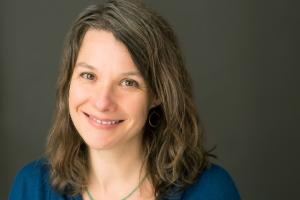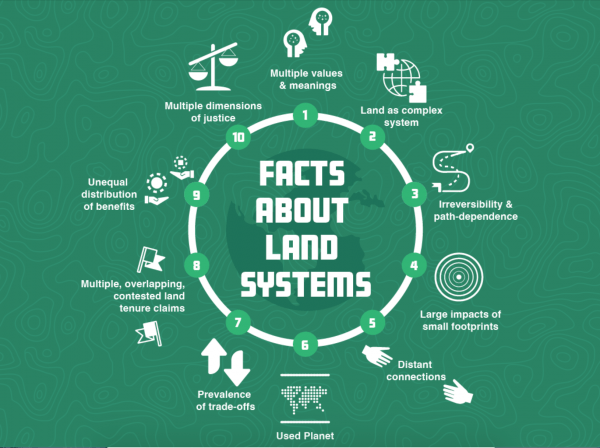Changing Mindsets on Changing Landscapes
GEOG research professor part of an international team urging policymakers to embrace a new framework for thinking about land use
Ariane de Bremond, an associate research professor in the University of Maryland’s Department of Geographical Sciences (GEOG), co-led a new paper containing 10 facts that land use scientists around the world believe are oft-overlooked in global policy debates about sustainability, conservation, climate change and more.
The paper, published in the Proceedings of the National Academy of Sciences (PNAS), was convened by the Global Land Programme (GLP), an interdisciplinary community of land scientists and practitioners co-designing global sustainability solutions. As the GLP’s Executive Officer, de Bremond helped bring together 50 land-use experts from more than 20 countries so that each could weigh in on what social and scientific factors are being left out of solutions-focused conversations.
“In April 2019, we were looking at initiatives and upcoming events around us—like Trillion Trees, the planned UN Biodiversity Conference, the UN Climate Change Conference in Glasgow [COP26]—and all we could see was this emphasis on silver-bullet solutions; so, we set about writing a paper that would synthesize the evidence, or facts, about land which our community of scientists had collected over decades of research,” explained de Bremond, mentioning the companion site the team developed to provide policymakers with a visual representation of those 10 facts. “We built a bunch of tools to ensure that this initiative continues, that this isn’t just a one-off paper, but a tool to help policymakers and practitioners do better work.”
All things considered, the researchers hope that the paper’s greatest mindset-shifting takeaways are that:
- Humans use land for fundamental needs such as food, energy, water, and spirituality;
- We live on a used planet, where all land, even areas considered “unused” or “untouched,” provides important benefits to people;
- Every land use decision, no matter how small, can have large, distant, complex and sometimes irreversible impacts; and
- Every land use decision has trade-offs for people and nature.

“We are careful to not call these ‘criteria,’ but if you checked these boxes and said, ‘Ok we have ensured we have taken these things into account,’ you have a much better chance of getting to a good decision; a good decision meaning a better outcome for people and nature,” said de Bremond.
Distinguished University Professor Chris Justice, also a member of the GEOG faculty and Project Scientist for the NASA Land-Cover and Land-Use Change Program, agrees.
“This paper provides a number of important messages concerning land use as a key element of our societal response to climate change and sustainability,” he said. “Understanding Land Use falls at the intersection of social and physical sciences and is a major focus of research and teaching in the Department of Geographical Sciences. I would like to congratulate Dr. de Bremond and her colleagues on this paper; the important role that she has been playing in the international coordination of the Global Land Programme; and the contribution she is making to the discipline.”
Indeed, the Department is a global leader in the area of land use and land-use change, with de Bremond and Justice joining Matt Hansen, Peter Potapov, George Hurtt, department chair Tatiana V. Loboda and a long list of colleagues conducting similar research.
“It is no exaggeration to say that without people like [former department chair and BSOS Dean] John Townsend and Chris Justice, I would never have been able to fit all of these pieces together myself,” said de Bremond. “It’s such an incredibly supportive department and community of scholars, and by being a part of that community, where we are all working and thinking on these issues, when I became involved with GLP through my research in the department, it was a natural next step for me.”
Looking to the future, de Bremond hopes the impact of this and future initiatives will be far-reaching.
“I'm trying to change how science works,” said de Bremond. “I have this vision of a partnership between scientists, policymakers and communities around the world where we are navigating and negotiating the challenges we face together.”
For a full list of the 10 facts and examples of how they manifest in the real world, visit 10facts.glp.earth.
Article originally posted by UMD College of Behavioral and Social Sciences.
Published on Mon, 02/07/2022 - 15:22


